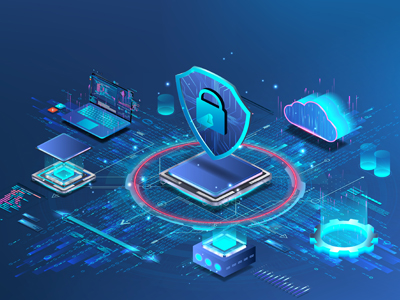Protecting cloud storage and backups from ransomware is incredibly important. Ransomware is starting to become a growing concern for businesses that rely on cloud computing. According to some reports, it is one of the most common cyber incidents that is disrupting companies today. Despite huge losses and the impact that they can have on a business, it is important for you to realize that it is simply malware.
Protecting your organization from ransomware is never letting it gain access to your network. Once it grabs hold of the data, it is near impossible to decrypt the locked data and restore what has been lost. If you never let it enter the organization’s system, then you will not face an issue.
Nonetheless, there is no doubt that ransomware is one of the more destructive forms of malware that businesses encounter. With that in mind, there are a couple of approaches that you can consider that help keep malware out of your organization’ system. In turn, protect the critical backups that you have stored on the interface.
Protecting Your Backups
Protecting your backups can be very complicated. Malware can spread out into your internal drives and encrypt your storage, especially your backup files. These files can be very useful to protect your business in the case of an unwanted occurrence. Backups can be critical in the case of an unwanted downtime as they can help keep your business’s procedures operational so that there are no damaging downtime costs.
Not all ransomware is damaging. Leaving your backup drives attached is therefore not such a bad practice. This is because leaving the backup drives attached will allow it to keep backing up data automatically. If you do nothing else, then making a copy of one of those images to a drive offline is a good idea.
Protecting Your Cloud Storage
Protecting cloud storage can be tricky because any change you make to the data gets instantly replicated inside the store as well. Ransomware, however, can simply change the file and cause the newly encrypted file to be replicated to the cloud and all the other machines.
As it turns out, both OneDrive, and DropBox have intriguing features that can assist organizations in recovering their data when required. The simple approach is that each application has a recycling bin, which means that whenever you make changes to a file, you find the previous version of the file in the recycling bin. More interestingly, these applications have features that help you alert any massive changes in the files, which means that they will send alerts if there are any suspicious changes to files.
Immutable Storage
Immutable storage implies that you have fixed data that is not subject to any change. Moreover, it also accounts for creating data storage that is not as easy to delete. Having immutable storage can be essential when protecting against ransomware since it ensures that they have a copy of their data that is always recoverable and secure.
It also helps equip your business with a backup strategy that helps strengthen your organization against unforeseen incidents. This type of storage helps create data that is always recoverable and also protected against accidents that are unpredictable. Ransomware is just one concern. Others can include lost data due to negligence, natural hazards, or more.
Once you have stored an immutable backup, the data remains unchangeable, and this is particularly important in the occurrence of ransomware. This is because ransomware locks away your data and encrypts access to it. If your backup is immutable, it means that you have made it impervious to any new malware infection.
You can also opt to archive the immutable backups, which can help you guarantee recovery from ransomware by finding the last backup you have on record and quickly recovering it. Keeping immutable backups effectively will ultimately mean that you will never be in a position where you will have to pay the ransom to get rid of the infection.
In addition to ransomware protection, immutable backups are also important for companies because they help them meet data compliance regulations that ensure provable accurate copies of historical data.
Retention Time Locking
In the age of ransomware attacks, companies and organizations much adhere to attention time locking if they want to protect against ransomware. The hackers can sometimes gain access to your backup storage and delete all of them before encrypting your data so that you have no other option but to pay them the ransom they demand to unlock your data.
For this issue, it is best to incorporate a retention time locking system. This involves installing all the long-term retention backup data. By time locking the data, any delete requests will be delayed in the retention data for a particular time.
As a result of this approach, the data will likely remain in the system for a specific time before it is deleted. This will give organizations time to recover the data and cancel the delete requests. This approach of retention time locking ensures that the data remains in the backup, ready for recovery.
Security Scanning Of Backup Jobs
Security scanning for backups is another backup monitoring and verification method that can be critical in the face of ransomware. Scanning any activities regarding backups is something that a managed service provider can help with.
Seek Vast IT Service Applications
VAST has helped many businesses integrate complete systems into their backups. They have a backup protection approach that keeps the entire basis covered. This allows businesses to not panic or worry even if there is an unforeseen incident of ransomware.



